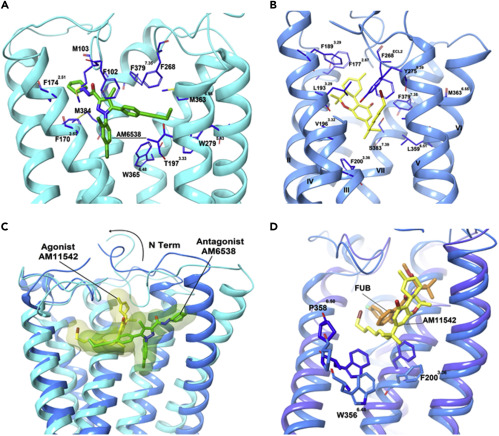
### Fresh Perspectives on CB1 Cannabinoid Receptor in its Activated State
Recently, the scientific community’s comprehension of the human cannabinoid receptor CB1 was confined to its inactive state, associated with antagonists. This shifted with a groundbreaking study spearheaded by Zhi-Jie Liu at ShanghaiTech University, which successfully captured the crystal structures of the CB1 receptor in its activated form. This progress is crucial since CB1 is the primary target of delta-9-tetrahydrocannabinol (THC), the psychoactive element in cannabis. The latest discoveries elucidate how cannabinoids exert their influence and provide a foundation for crafting more selective therapeutic agents aimed at CB1.
#### Approach
The research team developed a CB1–flavodoxin fusion protein, crystallizing it within a lipidic cubic phase alongside two synthetic agonists, AM11542 and AM841. These agonists replicate THC’s tricyclic ring structure but feature extended alkyl chains and chemical elements that stabilize the receptor in its activated configuration.
#### Structural Observations
The shift from inactive to active CB1 entails significant structural alterations compared to its antagonist-bound form. The ligand-binding pocket reduces by 53% with the attachment of AM11542 and AM841, while helices I and II curve inward more than seen in any other analyzed G protein-coupled receptor (GPCR). On the cytoplasmic side, helix VI’s outward rotation by 8Å enables G-protein interaction. Notably, a cholesterol molecule is nestled among helices II, III, and IV, a distinctive characteristic in these active forms, missing in previously identified inactive structures.
From a molecular standpoint, activation entails a ‘twin toggle switch’—two aromatic residues that realign upon agonist binding, initiating downstream signaling. The analysis indicates CB1‘s remarkable flexibility, associated with its ability to engage with a wide range of chemical ligands.
#### Significance for Therapeutics
These insights not only resolve long-standing inquiries regarding CB1‘s architecture but also guide the formulation of safer cannabinoid-based therapies aimed at pain and neurological conditions. Mapping out the active state of CB1 enhances the likelihood of developing innovative medical solutions that utilize the receptor’s complexities in a controlled, effective manner.
By providing a comprehensive blueprint of CB1 in its active conformation, Liu and associates make a substantial advancement, setting the stage for targeted drug development and deepening the understanding of cannabinoid interactions within the human body.